Aug 26th 2024
Everything you need to know about wheel sizing
If you’re shopping for new wheels it's easy to be confused by the thousands of new terms you have to learn. Offset, backspacing, bolt-pattern, PCD, hub bore… the list goes on and on.
Here, we’re going to teach you everything you need to know about wheel specs, starting from the absolute beginning. This info will apply to any type of vehicle with wheels: cars, trucks, heck… even powersports. The goal is to make wheel specs so easy that you could send it to your mom and she would understand what offset is by the end.
Quick links
- Bolt pattern
- Wheel diameter
- Wheel width
- Wheel offset
- Wheel backspacing
- Wheel hub bore
- Lug bolt Diameter
- Redrill/custom drill
Bolt pattern (AKA PCD)
Will those shiny new wheels you were looking at bolt onto your car? Well, that depends on if they’re the correct bolt pattern (more technically known as ‘Pitch Circle Diameter’). Arguably the most important number associated with your wheels - if you get this wrong you can’t even mount ‘em on your car.
Let’s visualize it. Draw an imaginary circle between your lug studs (or bolt holes). Now, the diameter of that circle is your bolt pattern. Pretty simple.
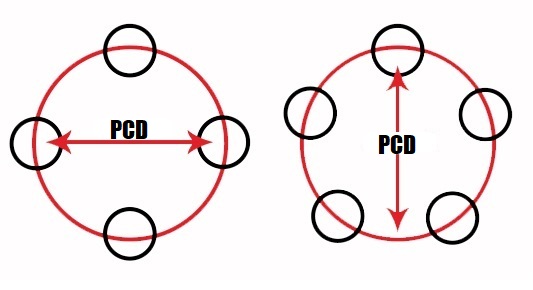
These are commonly listed as: 5x114.3, a very common size for sports cars. The first number, 5 in this case, denotes the number of lugs. The second number, 114.3, is the PCD we just talked about.
The number your car uses should be easy enough to find. ‘Search by Vehicle’ in our shop to get PCD and more quick info about your car’s fitment. Otherwise, look this up on a forum (always verify) or consult your service manual.
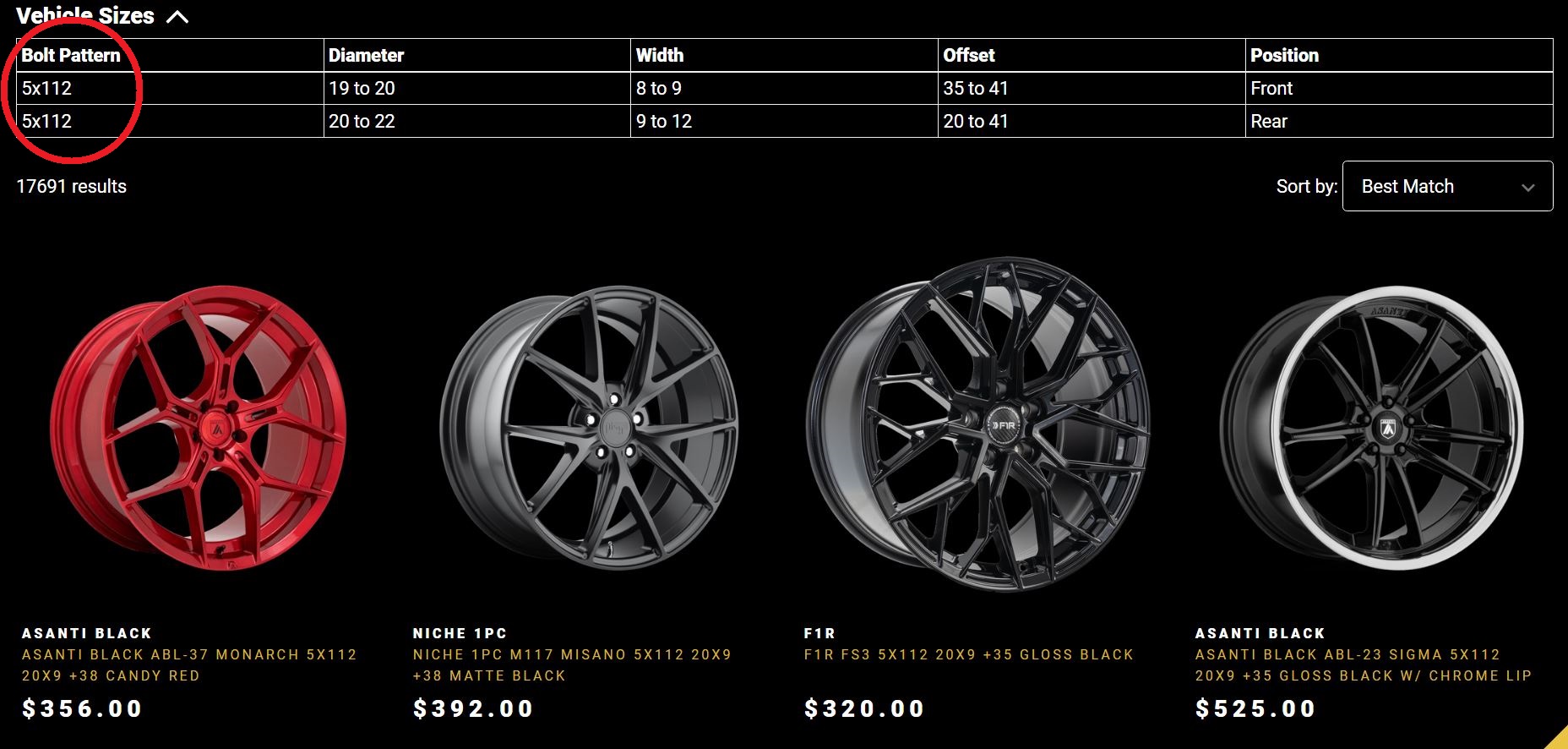
Wheel diameter
If you’re familiar with one number on your wheels, it’s probably diameter. If not, no worries.
This is how large your wheels are when observing your car from the side - how much the wheels fill out the fenders. This number dictates what size of tire you will need. This is also very critical as if it’s too small your wheel will hit the brake caliper, too large: you end up with a donk, unless that’s what you’re going for.
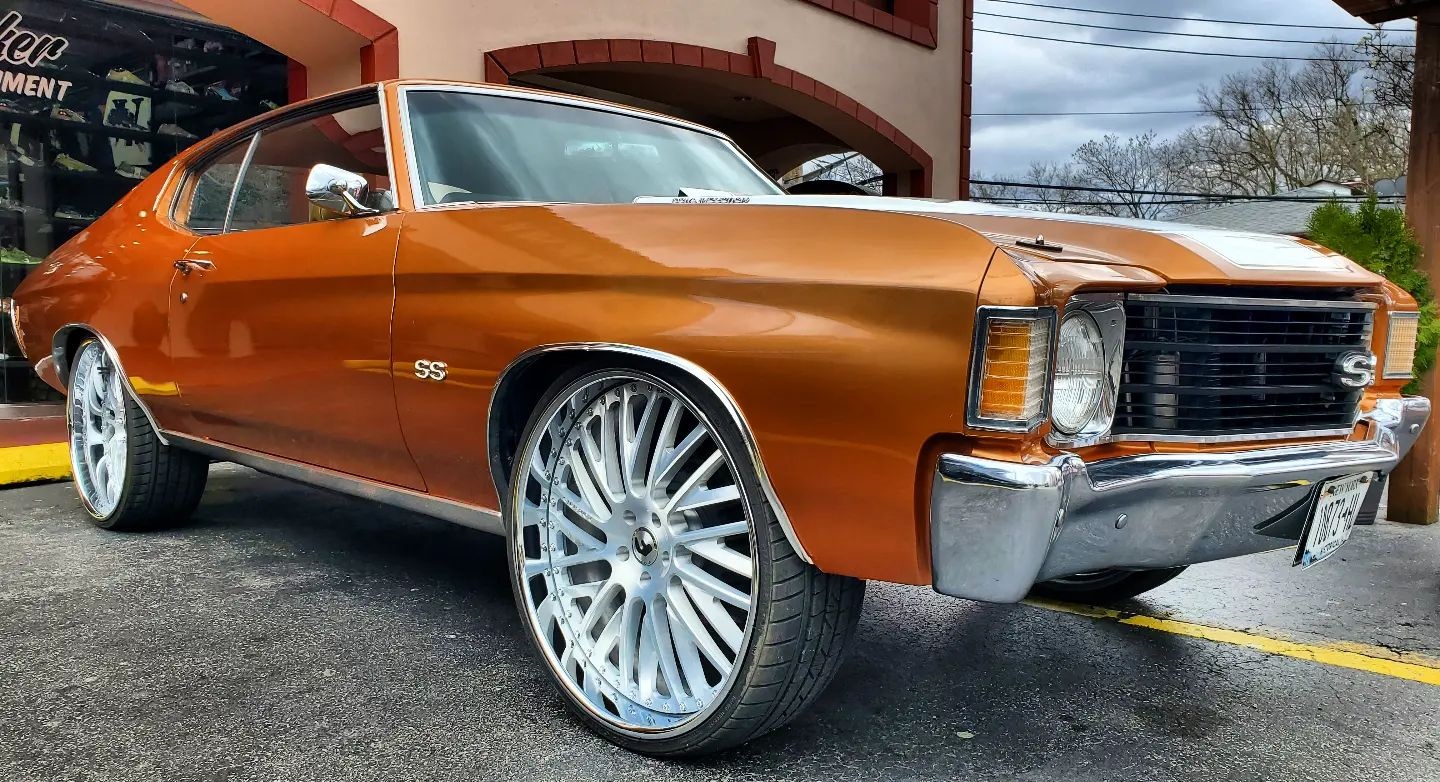
If you simply measure across your wheels *pictured below* you'll get an invalid measurement. This is because wheels are measured where the tire beads to the wheel, rather than the outermost part - much like wheel width, which we'll discuss next.
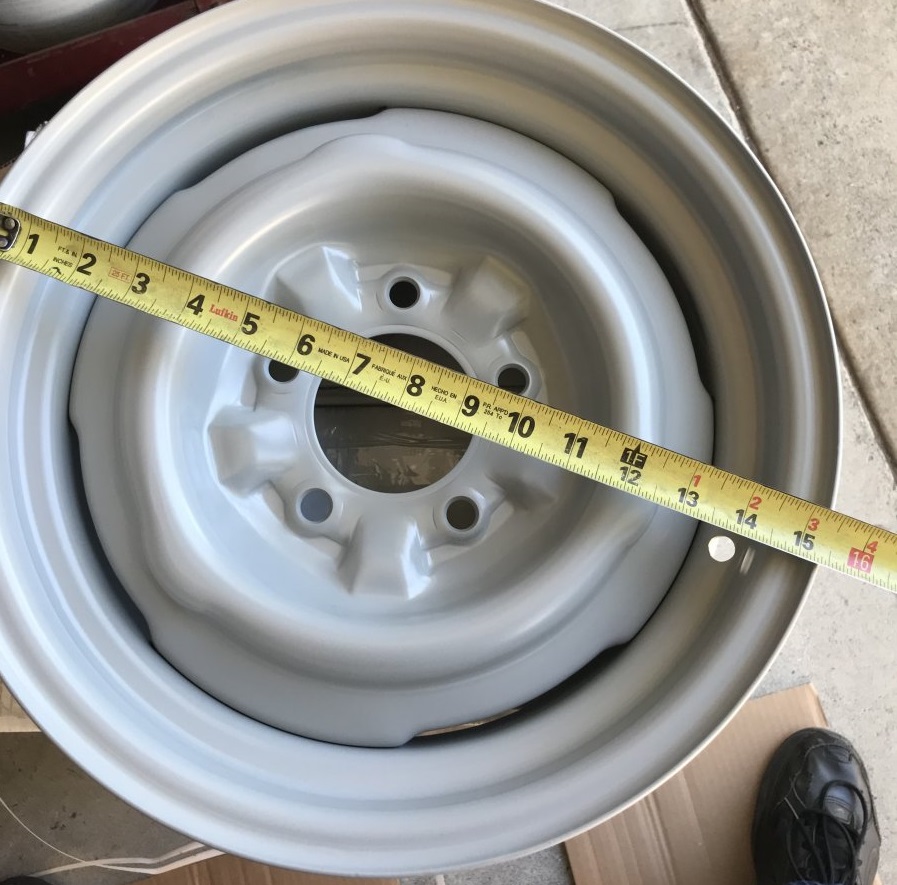
These are 14" wheels
Older cars typically use aftermarket wheels 1, 2, or even 3 inches larger than stock. Newer stuff might retain the same size as stock or 1-2 inches larger.
Diameter also affects performance. Larger diameter wheels are made with more aluminum, meaning they come out heavier. If you’re going for all-out performance, opt for the smallest wheels that will fit over your brakes.
Larger wheels often need smaller sidewall tires, which have pros and cons: turn-in-response time is improved with smaller sidewall tires, for example. However, ride quality deteriorates the smaller you size your tires (ask truck owners).
Finding the best diameter involves weighing performance tradeoffs and aesthetics, then choosing what’s best for your application.
Wheel width
Width is all about how wide your wheels are from bead-seat to bead-seat. Interestingly, the overall width of your wheels will come out to 1” wider than the advertised width. So, your wheels sold as 9.0” wide will measure 10” from flange-to-flange.
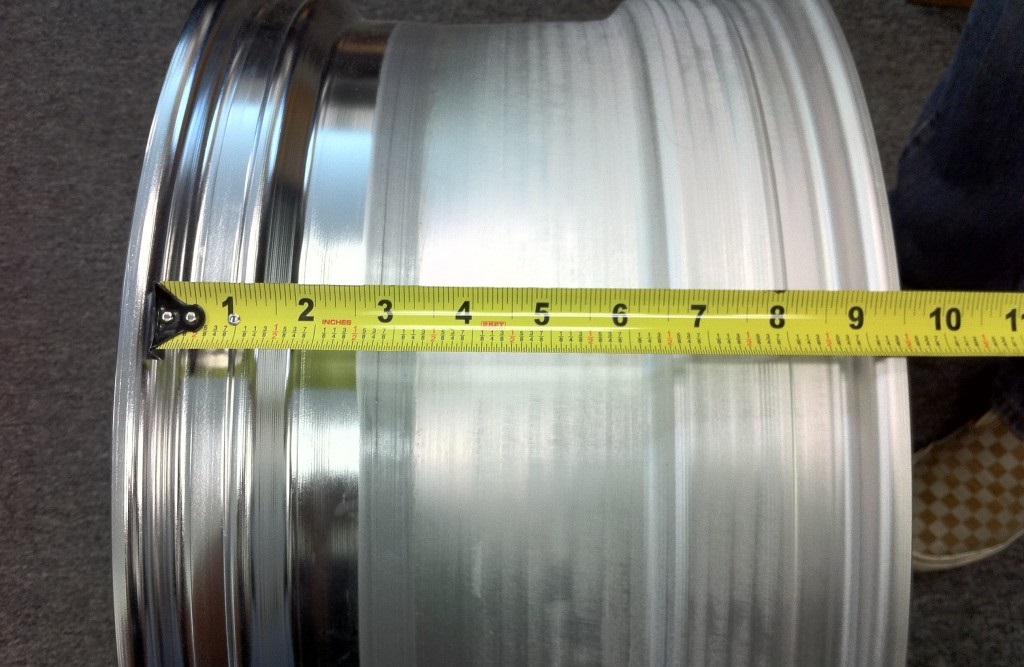
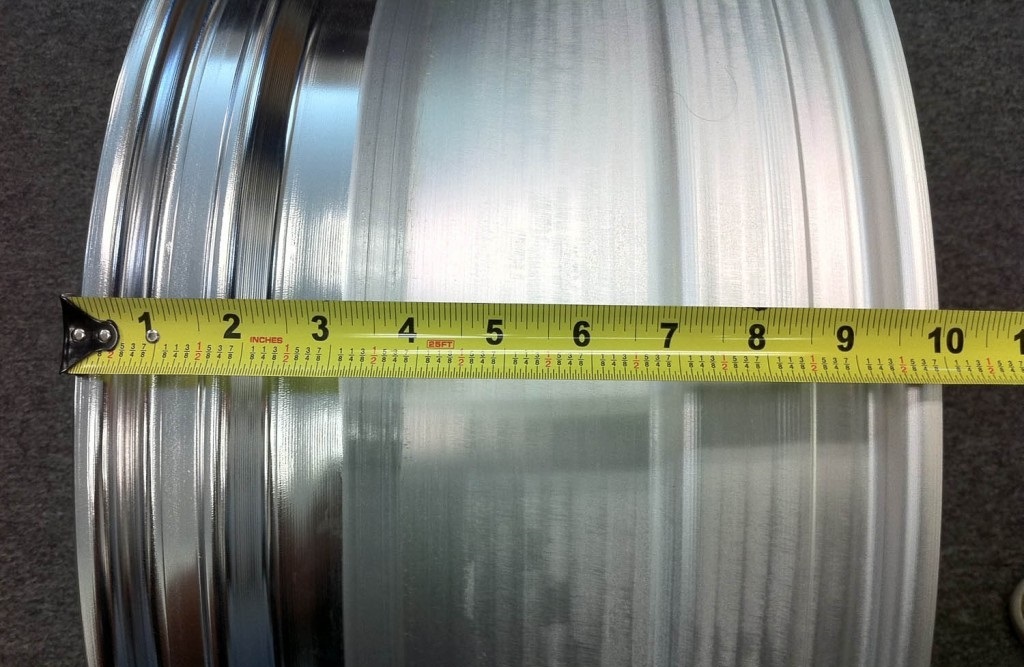
9 inch wide wheels. Correct measurement *left* vs incorrect
Width is one of the most important measurements for performance as increasing width will add weight because it needs more aluminum, but also provides extra contact patch that you can take advantage of by mounting wider tires. Ultimately, wider wheels can lead to improved mechanical grip… to an extent.
Before you buy the widest wheels for your car, keep in mind this does have a point of diminishing returns. You want to go with the widest wheels that your car can realistically utilize. Your 287 HP 350z doesn’t need a 12” wide wheel for grip.
For most cars, a 9-10” wide wheel is the sweet spot. This allows for 255 to 275 wide tires.
Wider wheels are one of the best performance mods, heck, maybe even the best.
Wheel offset
Offset is scary for a lot of people... for virtually no reason. Think of it as the distance from the wheel’s centerline to the mounting surface, expressed in millimeters.
Still complicated? Think of it this way: 1) look at your wheel from the front or back of the car 2) draw an imaginary line vertically 3) the place where your wheel mounts (inward or outward) is your offset *in millimeters*.
That is the technical explanation of wheel offset. In the real world, it’s as simple as ‘ the lower the number, the more the wheel pokes out'. In general, your car, assuming it’s a daily driver, will accept a +30 to +50 offset, depending on the make/model. Trucks generally take lower offset wheels: typically +12 to -12.
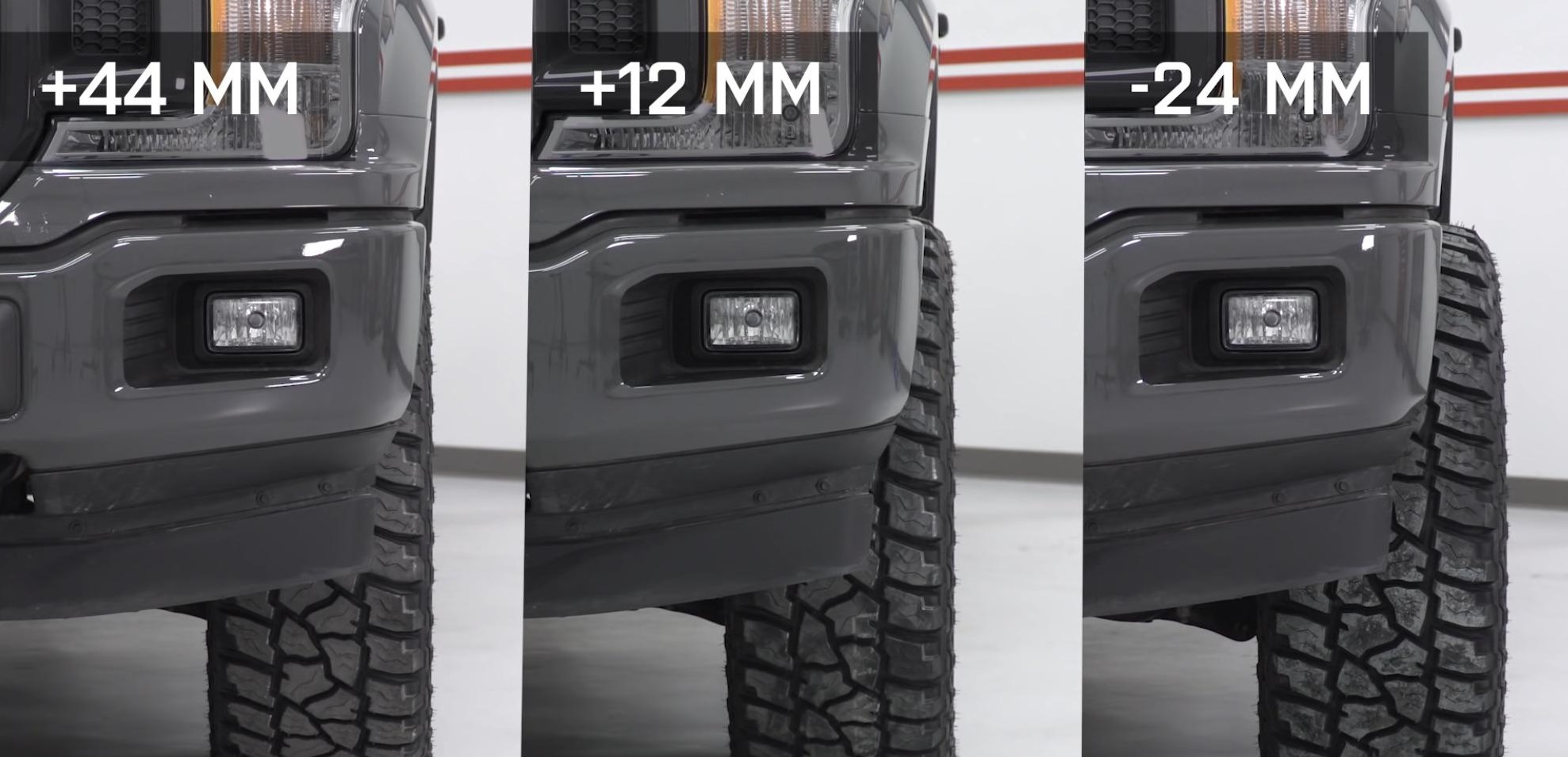
If you’re still not sure, leave it to the professionals. You can use tools like our fitment search, fitment guides, vehicle gallery, or YouTube channel to help you figure out the correct offset for your car. Or, simply contact us!
Don’t screw up your fitment.
Browse hundreds of cars in our Fitment Gallery. Get inspired & get it right the first try.
Post your own ride to help others!
For monoblock (1 piece) wheels, offset affects brake clearance by determining how much space there is between the wheel mounting surface and spokes.
Wheel backspacing
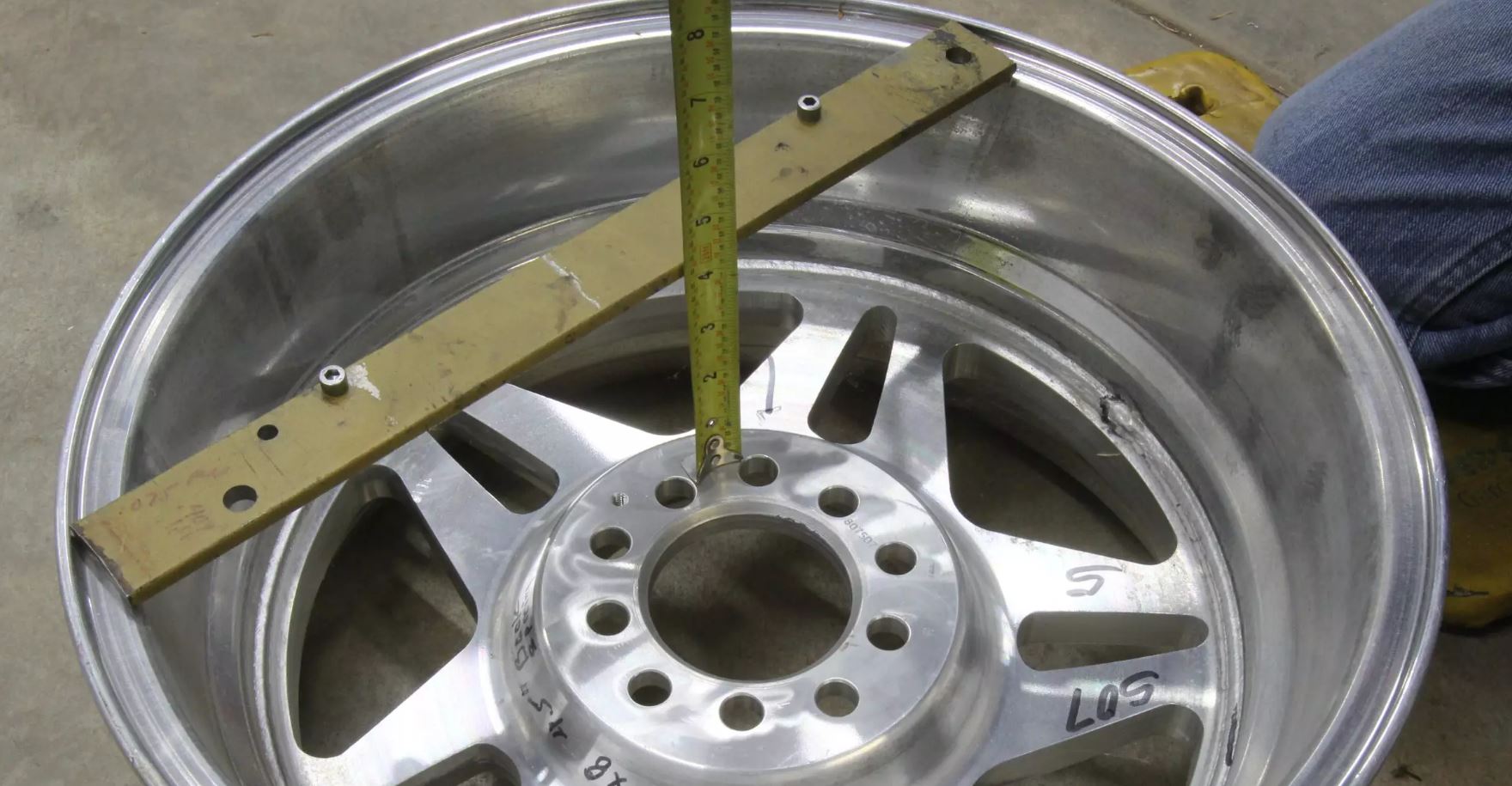
This is basically another way to express wheel offset. With backspacing, we measure the distance between the hub mounting service to the innermost edge of the wheel. This term is typically used the most with hotrods, classic American cars, and trucks.
Really, it comes down to personal preference on whether you use offset or backspacing - you can convert between the two easily. One benefit of thinking in terms of backspacing is that it helps to determine how much your wheels poke inward, making it easy to visualize potential interference with suspension components.
Wheel hub bore
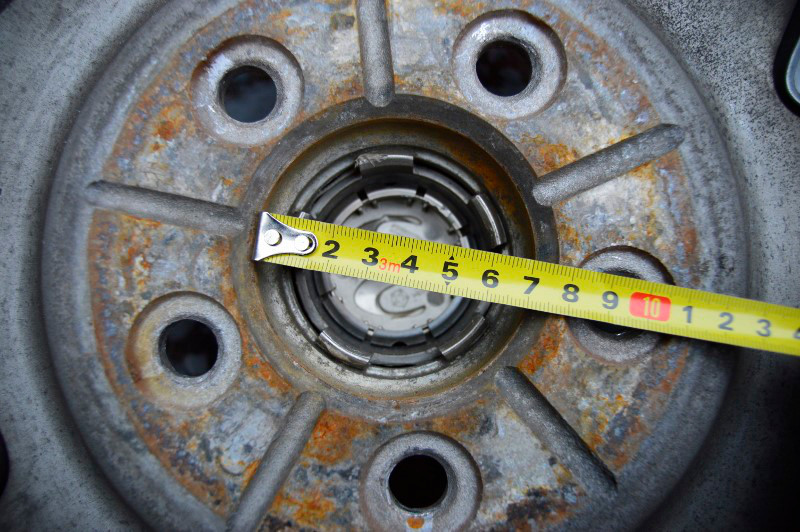
Also called ‘center bore’ or ‘centre bore’, this is the diameter of the part of your wheel that slides onto the hub of your vehicle. Wheels can be made hubcentric, meaning the hub bore is the same as your car, or they can be made to a standard larger hub bore size that allows hubcentric rings to be used. 99% of the time the standard size is 73.1mm, but check with your wheel manufacturer.

Most wheels are not hubcentric as it wouldn’t make sense from a production standpoint. This is especially true with cast wheels. Hubcentric wheels typically are made with a specific application in mind. For example, factory replica wheels for a Mercedes will use a Mercedes hub bore. If you’re custom ordering a set of made-to-order 3P wheels you can expect them to be hubcentric as well.
| Common hub bores in mm | |
| Make | Size |
| Audi/BMW | 66.6/72.6 |
| Chevy | 66.9 |
|
Honda/Acura
|
64.1 |
| GMC | 78.1 |
| Nissan | 66.1 |
| Subaru | 56.1 |
| Toyota | 54.1/60.1 |
Here are some common sizes for sports compacts, by make. Keep in mind the size of the vehicle how large the hubs are, and as such: how big the hub bore is. 3/4-ton trucks will use 100mm+ center bores.
Matching the wheel center bore with your car is important to avoid NVH at speed (noise, vibration, harshness). Lug nuts are primarily to fasten your wheels, not center them. If your wheels aren’t hubcentric, budget a set of hubcentic rings
Lug bolt diameter
This one normally isn’t a factor as most cars use an M12 size bolt diameter, and guess what? Most wheels come drilled to accept M12. But of course, there are exceptions. The other size you might come across is M14.
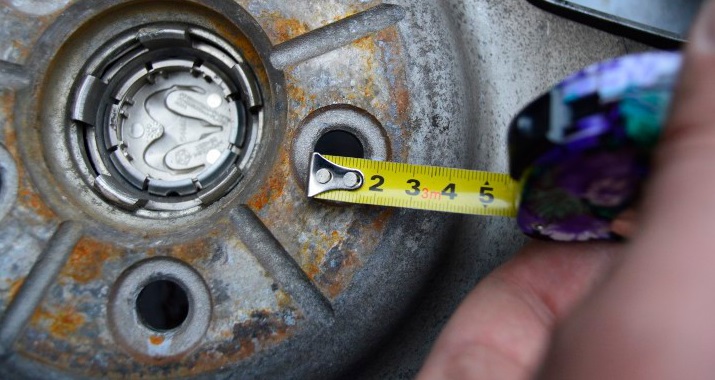
If you have a Mustang or Tesla, you’ll want to confirm the wheels you’re ordering are drilled to M14. If not, well, maybe bust out an M14 drill bit and do it yourself… but we can’t recommend you do this.
For example, if you wanted to put JDM wheels on your Mustang, the proper way to do it would be to have them professional bored out to fit your application.
Redrill or custom drill your wheels
This isn’t technically sizing, but it’s related to sizing. Some vendors, such as us, have CNC equipment capable of modifying wheels to suit an application they weren’t meant for. Do you want Ford wheels for your Camaro? We can put them on our Haas CNC machines, and drill them from 5x114.3 to 5x120.65.
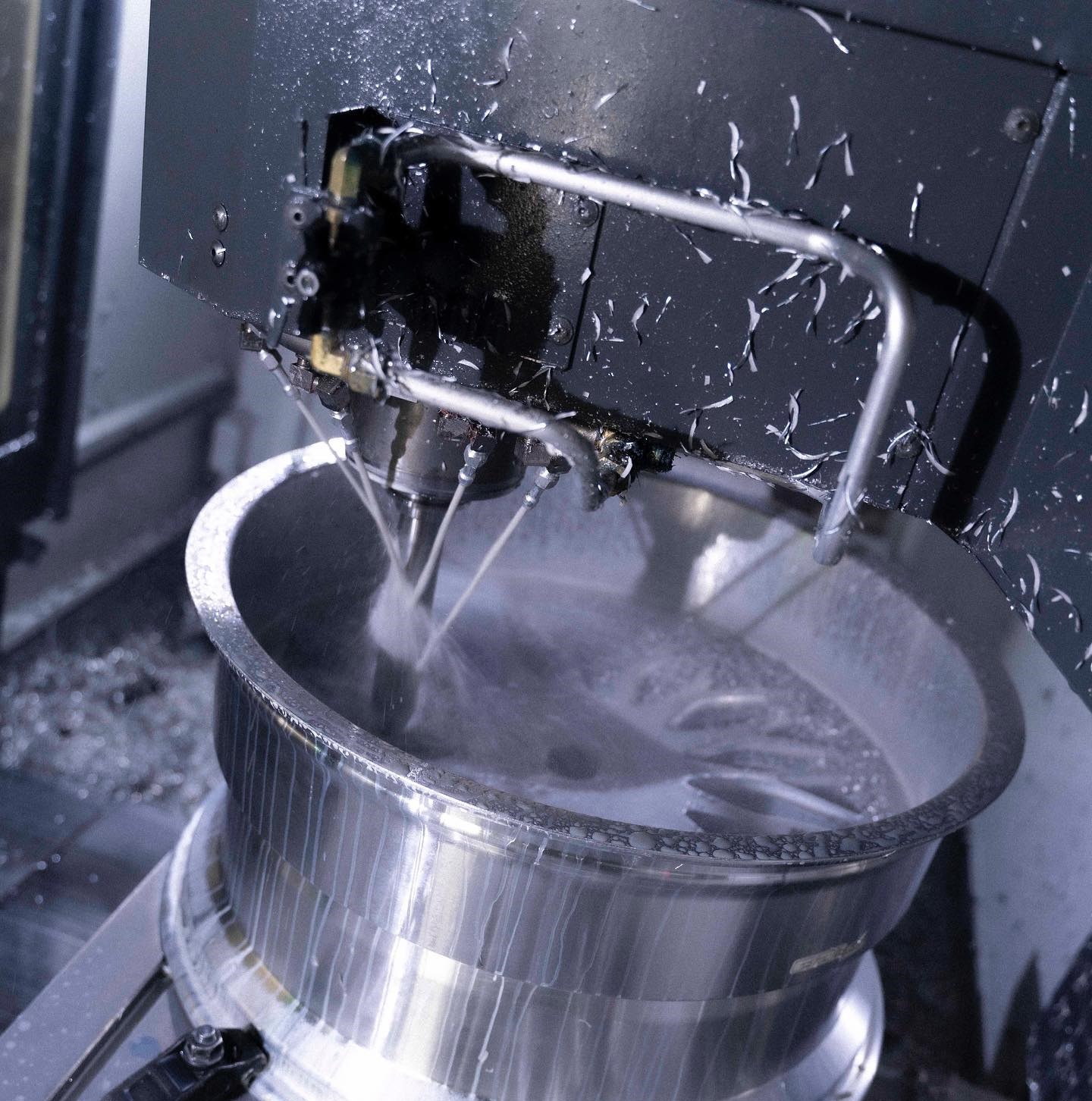
‘Redrilling’ or ‘custom drilling’ are terms you might see when ordering your wheels, but they shouldn’t scare you off. When done correctly, the procedure is perfectly safe and allows you to fit wheels you won’t ordinarily be able to run.
Wrap up
So that’s it. You’re a wheel expert now. Congrats. Now you can order a set of wheels confidently, knowing exactly what all the weird nomenclature means. More importantly, if someone asks you about your wheels at your local car meet, you can answer them… Instead of stuttering, turning red, and leaving 5 minutes later.
If you’re in the market for wheels, look no further than our shop. We got the best place to buy wheels. You can pair them with tires, get them mounted & balanced, then shipped directly to your door (like, ready to install).
But what if you don’t understand tire specs? Don't worry, we got a guide for that too!

